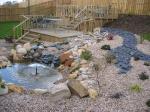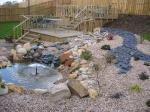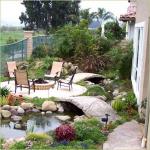
Size : Up to 2 inches long.
Color: Reddish brown.
The American cockroach is the largest cockroach that infests buildings in the United States. This insect may be recognized by a yellow "figure-8" pattern on the shield at the front of its body. In Florida, the American cockroach is called the "palmetto bug," and it has the nickname "water bug" throughout the United States.
Behavior – Like all cockroaches, it is omnivorous and will eat virtually anything people will and many things we won't.
Habitat – This cockroach thrives in warm, damp environments, such as sewers, steam tunnels, basements, crawl spaces, and boiler rooms. In southern states, it will also be found living and breeding outdoors.
Tips for Control –
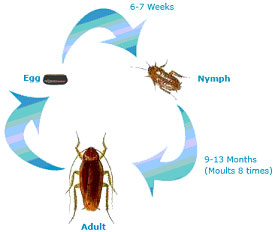

Size : About 1/2-inch in length.
Color: Brown.
It is recognized by the two dark, longitudinal stripes on the "shield" at the front of the body under which the head is located.
Behavior –
The German cockroach is the most prolific breeder among all cockroaches. Each egg capsule can contain up to 40 eggs and development from egg to adult can occur in as little as 45 days. Like all cockroaches, it is omnivorous and will eat virtually anything people will and many things we won't.
Habitat –
In homes, this pest will first locate itself in bathrooms and the kitchen, as close as possible to food and moisture sources. It spends about 80 percent of its time resting in cracks and voids.
Tips for Control –


Characteristics :
Size :
Ranges from 1/8-inch to more than 1/4-inch in length. The most commonly encountered species are found at the smaller end of this size scale.
Color:
Ranges from black to dark brown to red and black. The smaller species are typically uniformly dark in color. A larger species, common in Texas, is red and black. Acrobat ants are identifiable by the heart shape of their abdomen when viewed from above.
Behavior :–
When excited or disturbed, the acrobat ant workers run about with their abdomens held high above their heads. Like most ants, acrobat ants establish well-defined trails between the nest and food and water sources. They feed on a wide variety of foods, but the workers are partial to the sweet honeydew produced by aphids, scales, and mealy bugs found feeding on many trees and plants. Fruit trees, roses, and many shrubs serve as hosts for aphids and may contribute to ant infestations in homes and other buildings. Most infestations inside are the result of workers searching for food.
Habitat :
Acrobat ants are like carpenter ants in that they prefer to nest in moist or rotted wood.
Colonies are most often found in tree holes, dead limbs, stumps, and logs. Rotting areas in fences, decks, and railings may also be nesting locations.
Most infestations of acrobat ants originate from outdoor nests; however, if moist or rotted wood exists inside due to water leaks, this ant will readily nest indoors.
Such interior nests are typically found around the perimeter -- in soffits, door frames, and skylights.
Control :
Acrobat ants are controlled by finding and treating wood where the ant colonies are located. Often, the nest may be located far above the ground in a tree where it is inaccessible to direct treatment. In such cases, limiting interior invasion of ant trails is critical. Repairing water leaks and drying out moist wood inside will help prevent infestations of both acrobat and carpenter ants. Improving attic and crawl space ventilation is also important in limiting acrobat ant infestations. General tips for limiting ant infestations include:
Eliminating piles of lumber, bricks, or other debris that could serve as a nesting site for ants.
Keeping landscape mulch less than 2 inches thick and at least 12 inches away from foundations.
Ensuring the sprinkler system does not spray directly onto the foundation.
Sealing as many cracks in the building's exterior as possible.
Keeping tree and shrub branches trimmed to prevent touching the building

-
TESTINSECT CONTROL
.jpg) Spider web A leading provider of pest control
Spider web A leading provider of pest control -
Landscaper
.jpg) Spider Web services of a landscaper in the hands of specialists and engineers
Spider Web services of a landscaper in the hands of specialists and engineers -
Sterilization Systems
.jpg) Spider Web services also Sterilization Systems
Spider Web services also Sterilization Systems
.jpg)
.jpg)
.jpg)
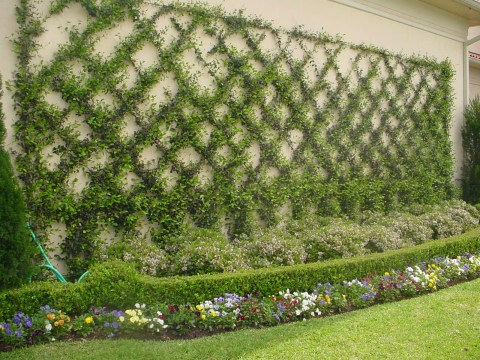
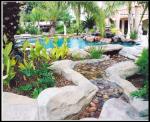
-20140316-104517.jpg)
-20140316-104512.jpg)
